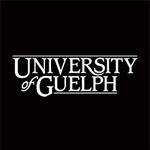My postcard: contemporary perspectives
This postcard incorporates the most important aspects of the Sutherland clan in an organized and visually appealing way, by layering images, prints, and objects relating to the group.
We begin with the building: Dunrobin Castle. This building was home to the Sutherland Earldom since the clan’s birth in 1235, and with 189 rooms, was named the largest castle in the Northern Highlands of Scotland. Over the years, Dunrobin Castle’s purpose has been everchanging: the building served as the home to the Earldom of the Sutherlands until World War One, when it became a Naval Hospital. After that, the castle began an all-boys’ boarding school from 1965-1972 until it was refurbished and renovated into a museum. The museum is open annually from April to October, holding a tea room, gift shop, and various interactive activities (Dunrobin Castle, n.d.).
Underneath the beautiful painting of Dunrobin castle is the clan’s official emblem: the Butcher’s Broom. This plant, more commonly known as box holly, was used as a natural drug for relief from poor blood circulation, leg cramps and swelling before present-day pharmaceuticals (RxList, 2017) The addition of this shrubbery adds texture and colour to the postcard, while shedding a light on a more cultural aspect of the clan.
Finally, the Sutherland Clan itself. As mentioned before, the Sutherland Clan was one of the northernly Scottish clans who held many alliances but also grudges with neighboring clans. The beautiful blue, green and red tartan acts as a backdrop for the other significant pieces of the family’s history, along with the red and gold coat of arms, worn by Sutherlands all over Scotland. Today, the Sutherland clan still exists; just not in the same ways as the 15th century. The clan is currently led by Countess Elizabeth Sutherland of Scotland.


